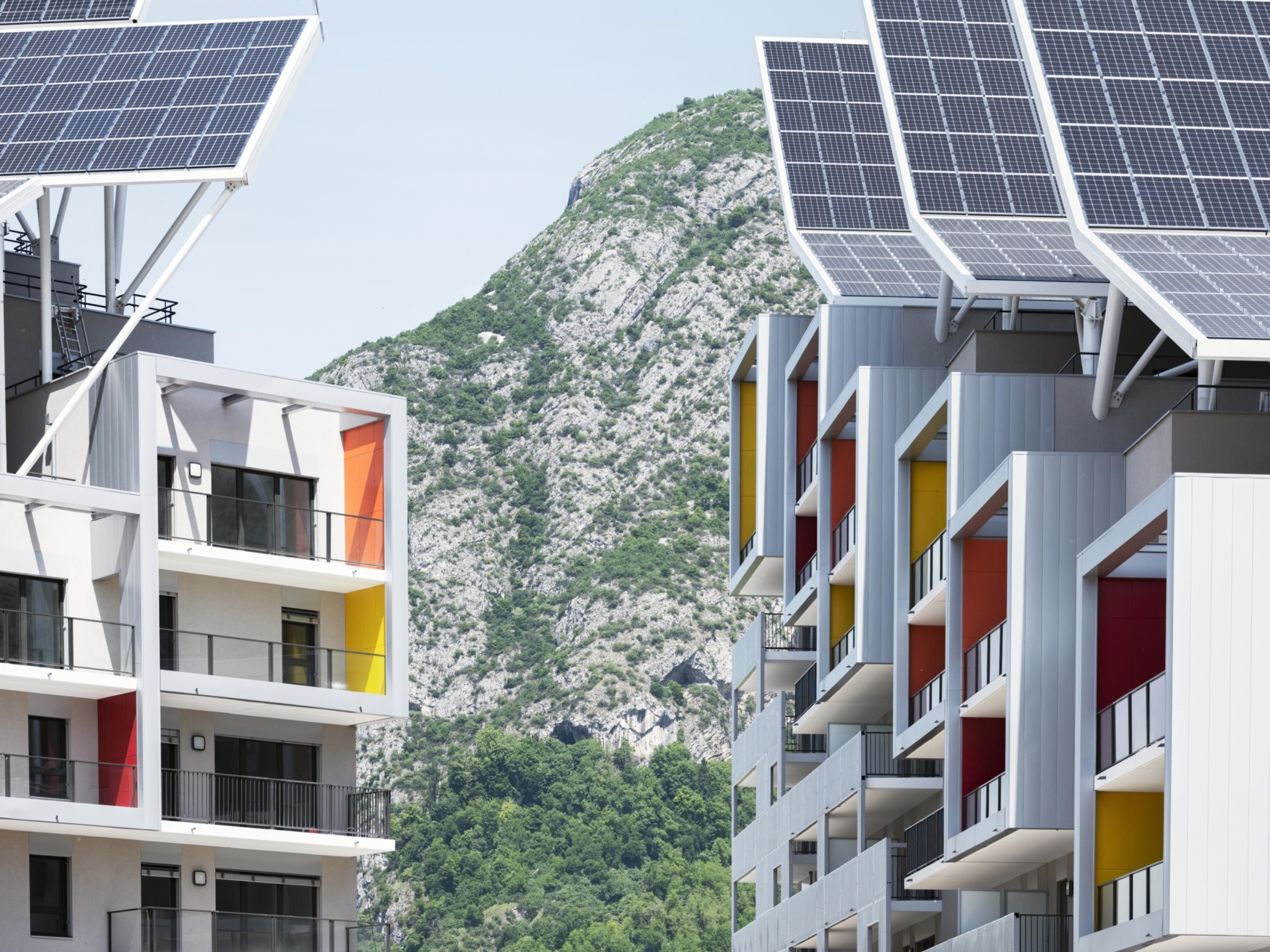
ABC
(Autonomous Building
for Citizens)
B. For Building. The ABC concept innovates via the construction processes used. The aim is to make use of research and methods for economic optimisation of projects, by incorporating a degree of standardisation in order to construct faster while maintaining a very high level of quality.
C. For Citizens. ABC is not just a technical approach, and one of the key issues it addresses is the involvement of residents throughout the process so that they can take ownership of the project’s unique aspects and innovations. The ABC concept puts residents at the heart of the construction project, in order to meet their current expectations and also societal changes: sharing of facilities, information and management systems, and scalability of certain spaces.
The territory of the Grenoble Presqu’île Ecocity was an ideal setting for applying the ABC concept to a real-life project. The project consisted of creating a built ensemble capable of capturing maximum solar energy while harmonising with the architecture of the joint development zone. The buildings’ morphology was designed to be well suited to the site. The emblematic silhouette, visible from the railway, evokes the surrounding mountains and accommodates the photovoltaic roofs which characterise the project. This mountain setting is accentuated by a perforated metal plinth towards the heart of the block and jutting boxes which seem hooked to a cliff.
The project provided a cycle parking place for each resident. A large communal room and vegetable gardens provide residents with opportunities to socialise. Large technical facilities (water facility and batteries) were planned for the purpose of energy storage and water storage and treatment. The installation of innovative water-recycling showers has enabled water consumption to be reduced still further. Each resident is aware of and controls their own consumption. Monitoring of performance and the residents’ taking ownership of the project will be carried out over a period of 5 years with the aim of achieving a precise assessment.
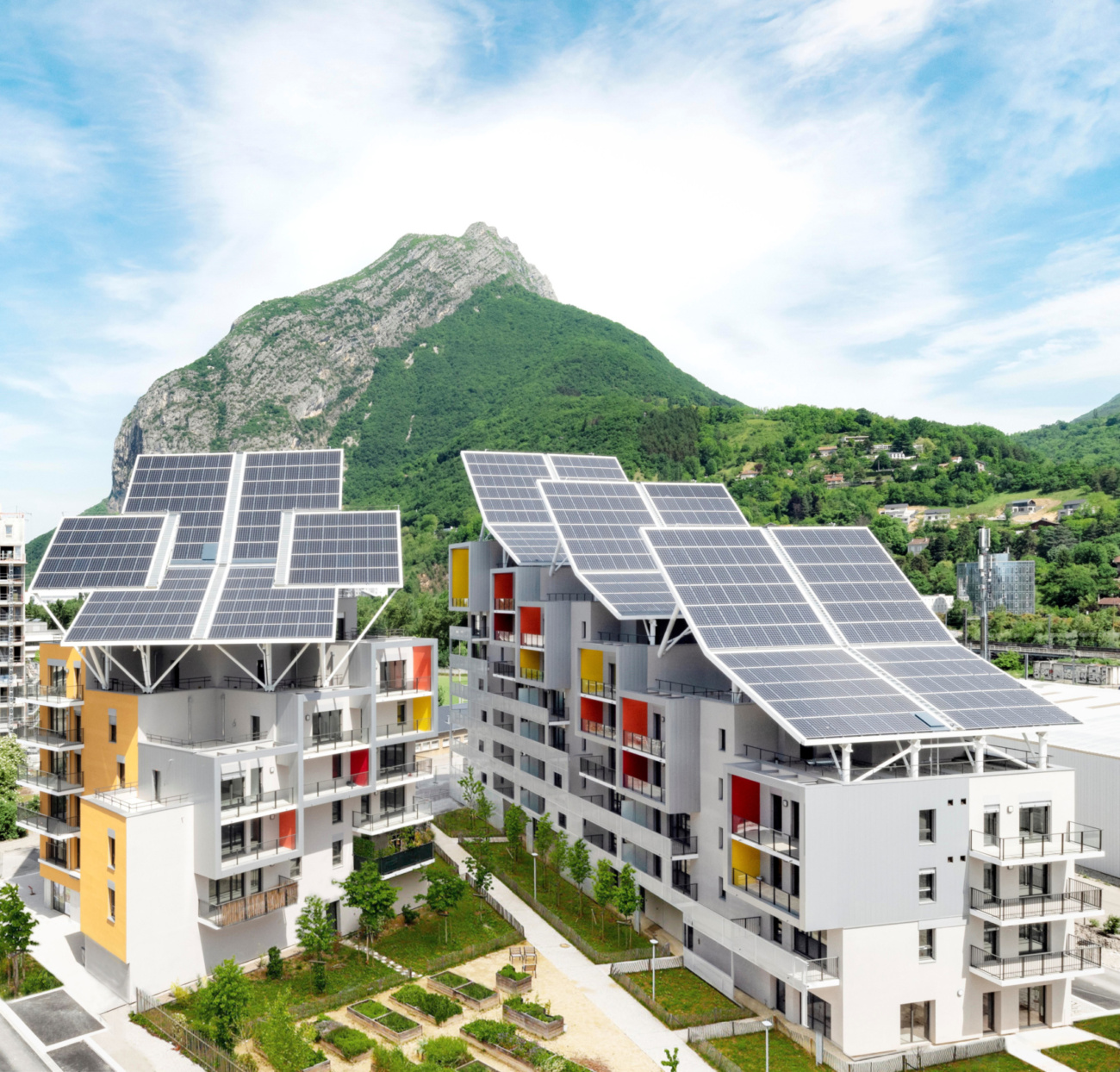
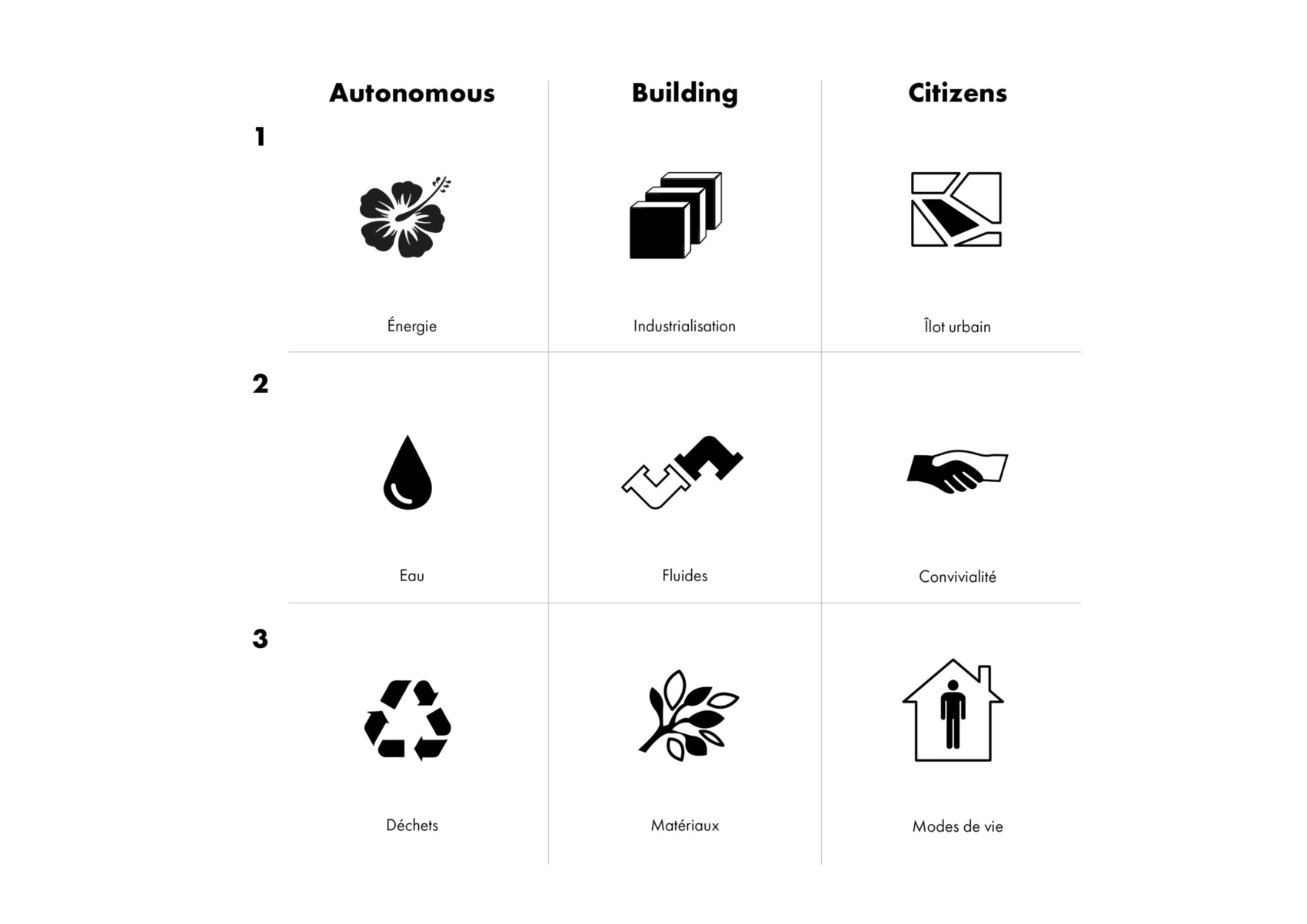
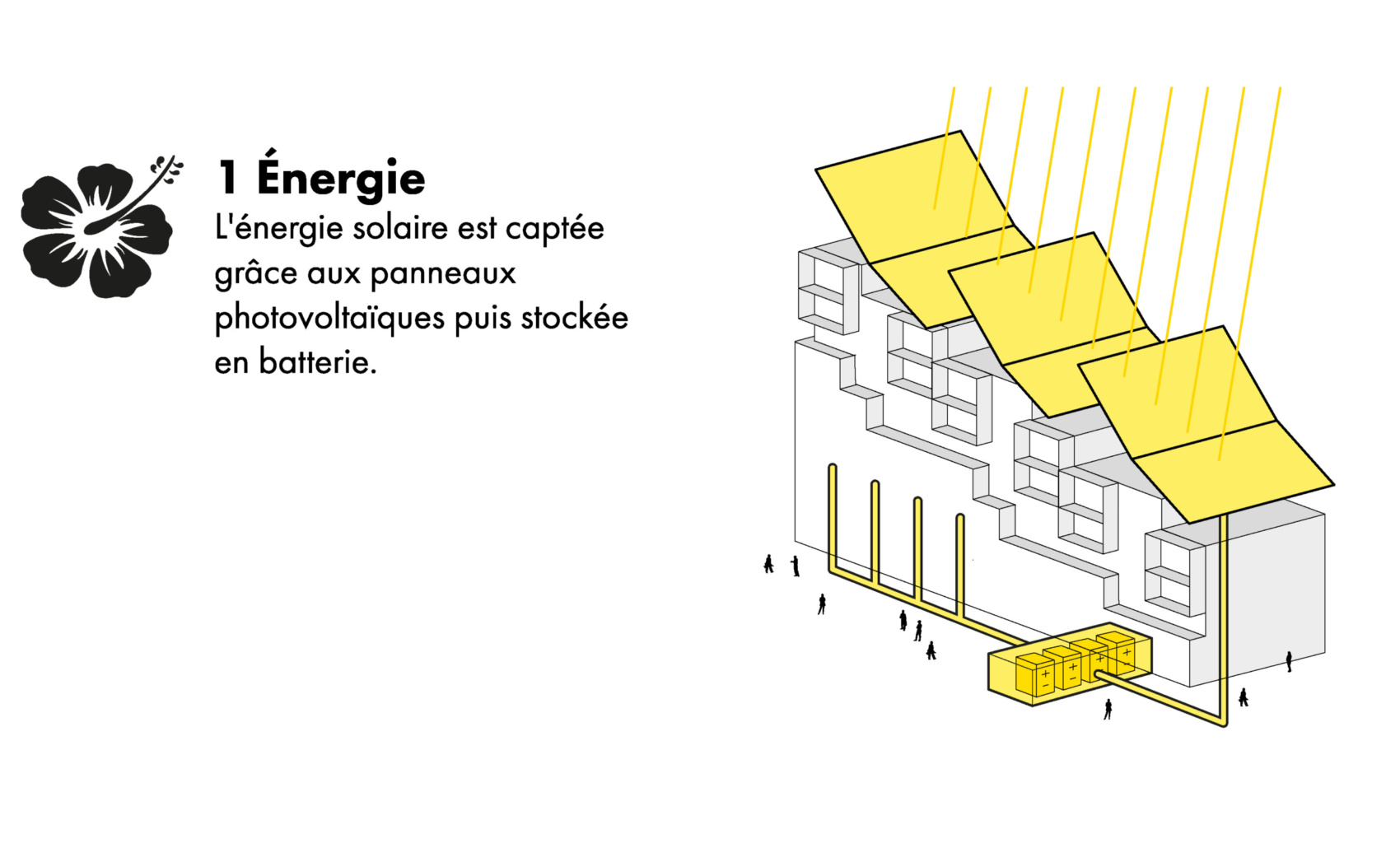
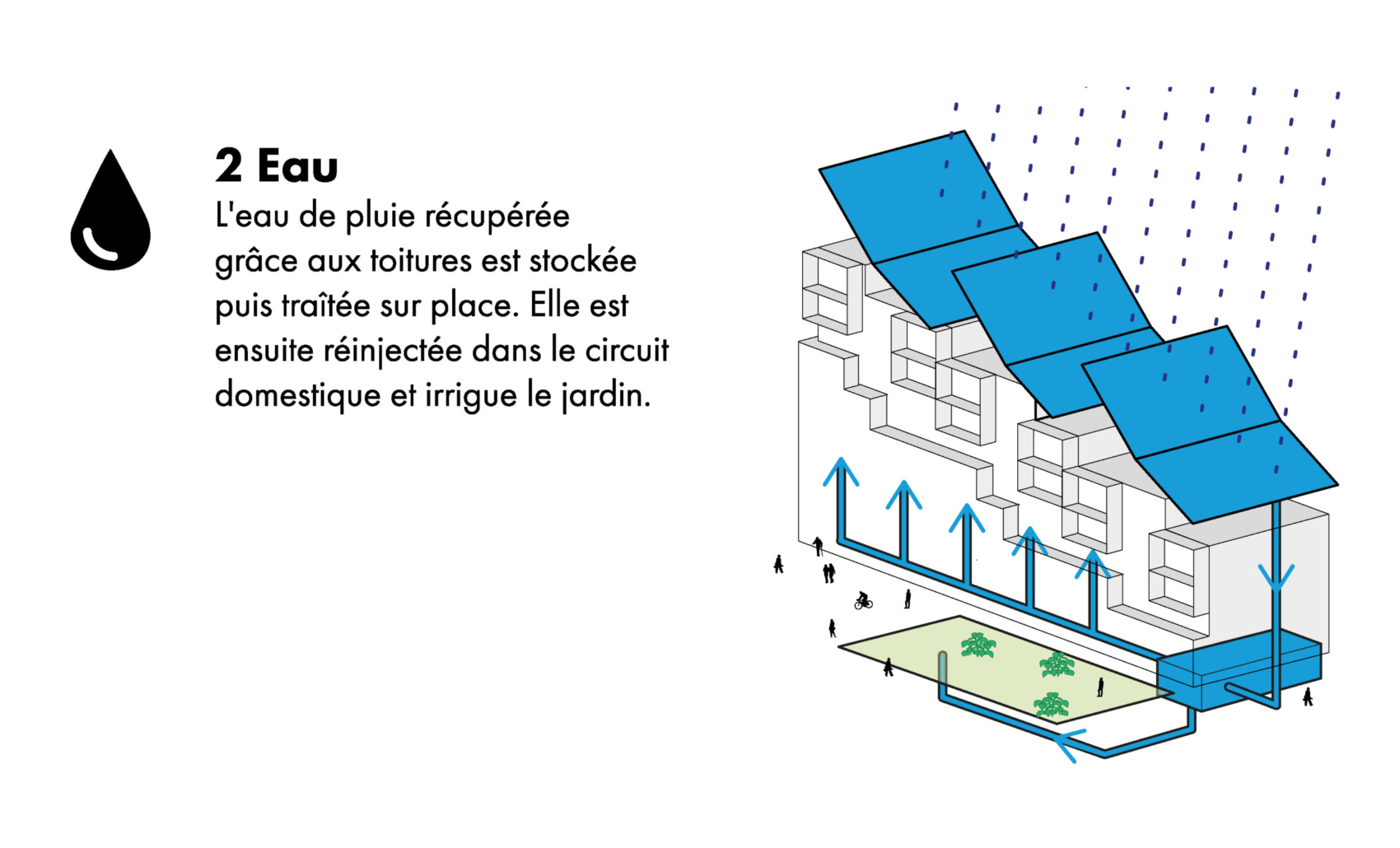
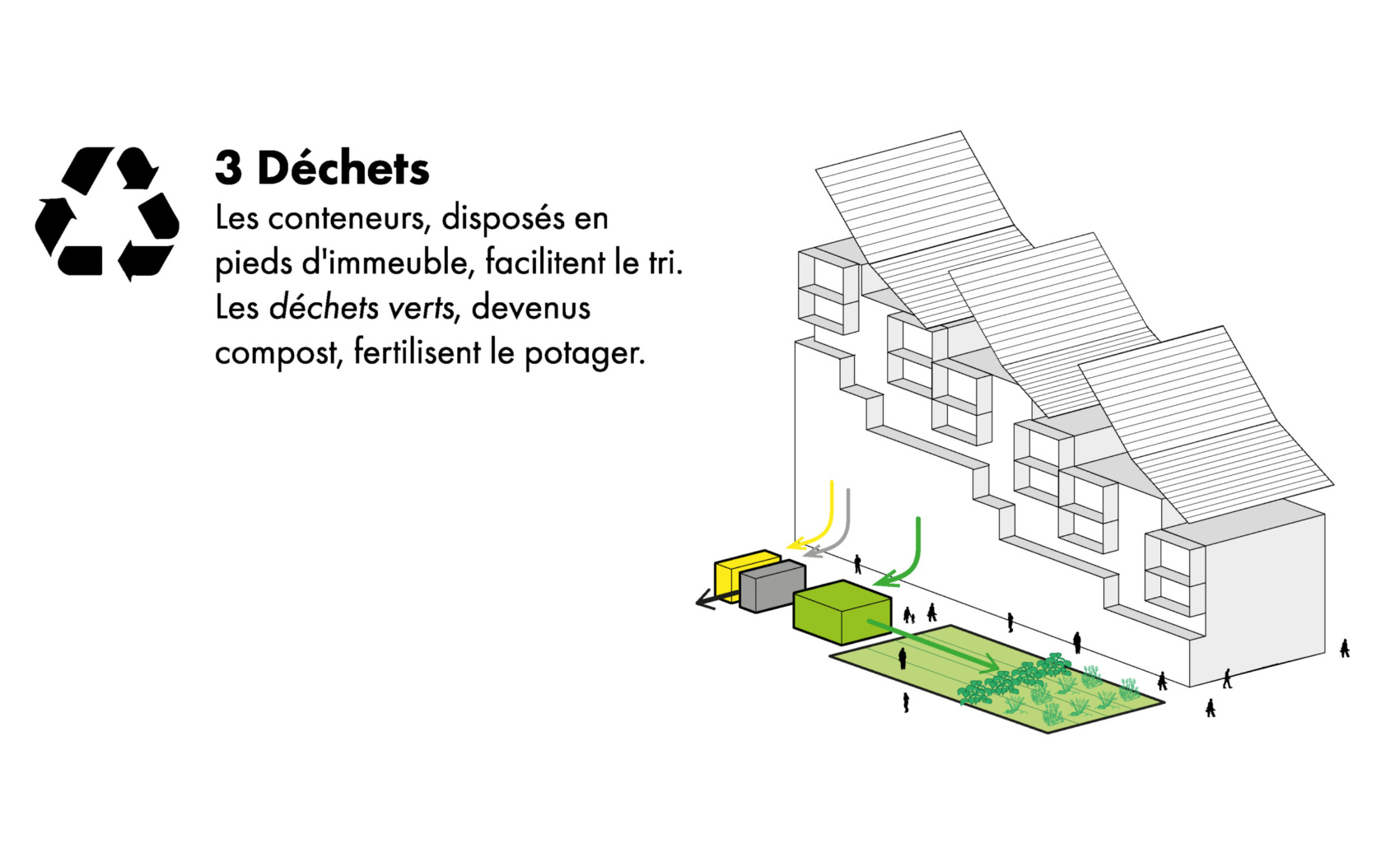
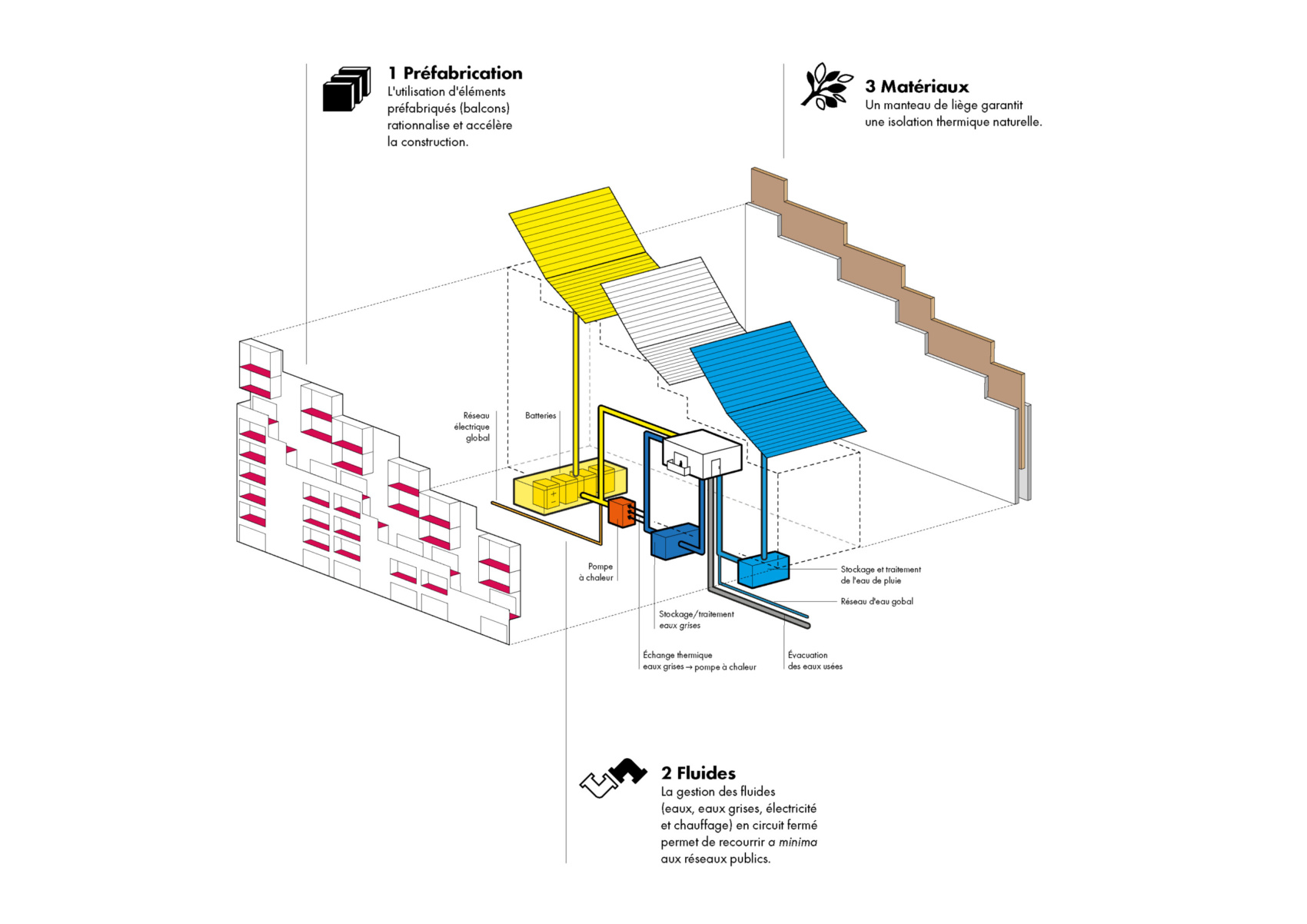
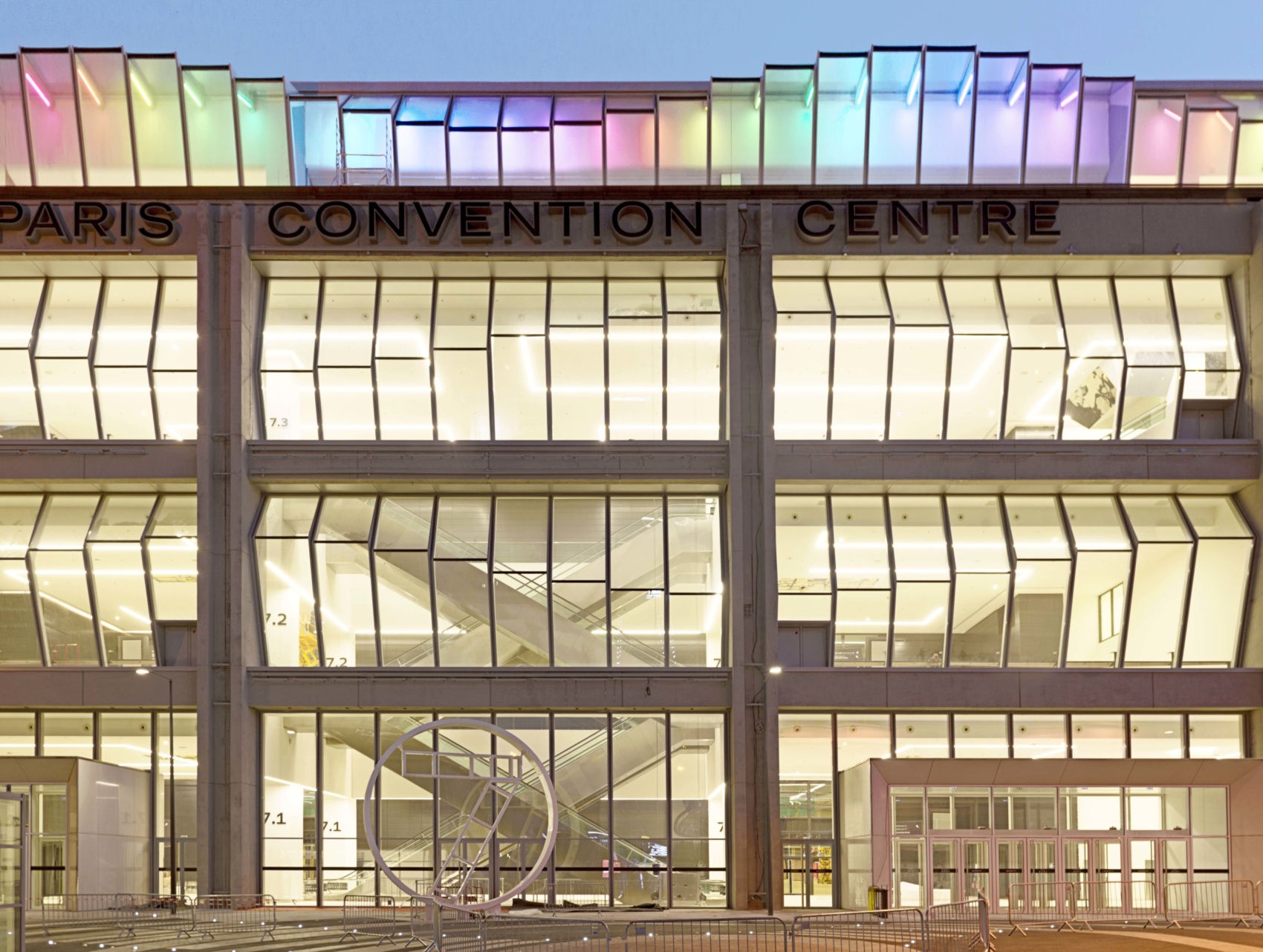
Hall 7